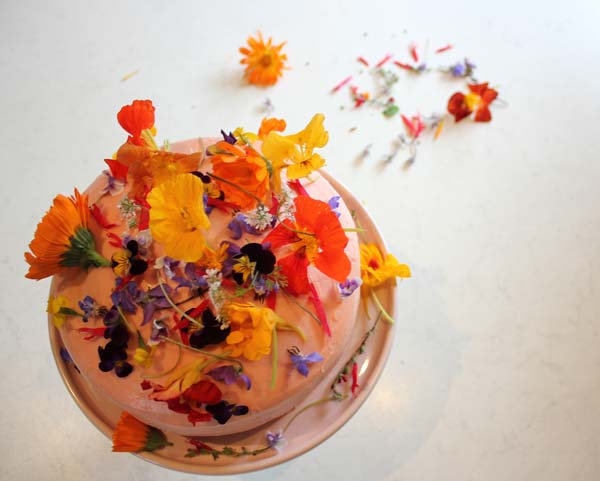The culinary and decorative benefits of edible flowers are endless. There are many easy-to-grow varieties and most can even be grown in pots. They have the ability to transform any boring dish by injecting new colours and flavours and are an interesting talking point (especially when you can declare that they are homegrown). Here are five of my family favourites to brighten up your table this spring.
1. Heartsease Viola tricolor
This cheerful annual is closely related to violets and pansies. It will grow well in full sun to part shade and will self-seed for many seasons to come. Use as a garnish for desserts, in salads or to revitalize a water jug.
2. Pineapple sage Salvia elegans
As its name suggests, pineapple sage leaves smell and taste, just like pineapple. Its equally tasty, red flowers are increasingly popular for use in desserts, or to make a cordial (for cocktails or diluted with mineral water). This hardy perennial bush can easily be grown from cuttings and is also a favourite of many pollinators.
3. Nasturtiums Tropaeolum
Nasturtiums sometimes get a bad rap for being old fashioned, but added to a cheese plate or rice paper rolls, its peppery flavour and bright colours are hard to beat. As a compact or trailing plant it can be easily grown in full sun, to part shade and comes in a variety of warm colours. Offering form, colour and flavour, nasturtiums are definitely making a comeback.
4. Marigolds Tagetes
Famed for being a pest deterrent, marigolds have always been a popular choice in edible gardens, though its culinary uses are less recognised. Pull the petals from the base of the flower to separate, and then sprinkle over salads to add a pop of colour. In Georgian cooking the flowers are sometimes used as a substitute for saffron, though the taste is subtle. Grow the bushy blooms in full sun amongst other edibles, or in pots.
5. Borage Borago officinalis
The pretty blue flowers of Borage are a favourite of the native Australian blue banded bee. Use it in the veggie garden to attract pollinators who will help to provide a bumper crop. Borage is also renowned for drawing up inaccessible nutrients from the soil to the benefit of other plants around it (strawberries and tomatoes will thrive in companion). The cucumber flavoured leaves and unruly stems are best given some space in the garden, with a full sun to part shade aspect. Use the flowers as a garnish, or frozen in ice cubes as a summery addition to drinks.
Now is the perfect time to get out into the garden, so find yourself some seeds, cuttings or seedlings, and get creative in the kitchen.
A quick note: When cooking with edible flowers, ensure that they are properly identified; be cautious of those you haven’t grown yourself; avoid pesticides; and only eat in small quantities.


![5 Reasons You Should Travel Alone Airplane [image source: chau nguyen/ http://thedevilhatessweatpants.blogspot.com.au ], crowd ink, crowdink, crowdink.com, crowdink.com.au](https://crowdink.com/wp-content/uploads/2016/08/Chau-airplane-218x150.jpg)





























